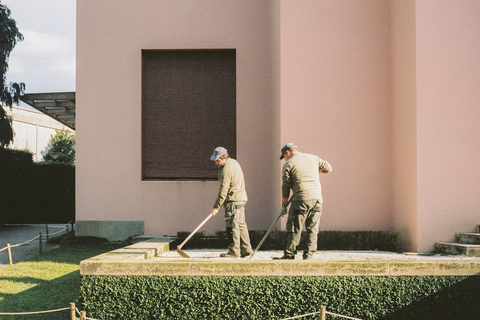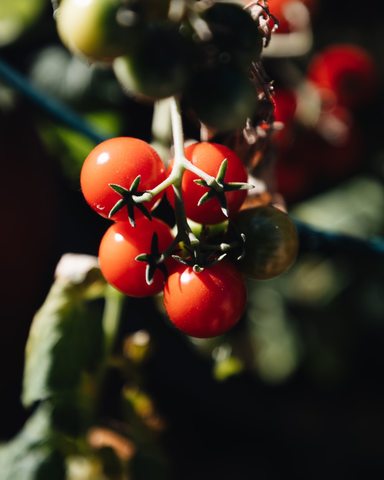The greenhouse gardening trend is growing rapidly. From domestic gardening to commercial farming, we’re noticing a sharp rise in the use of greenhouses in every capacity.
As greenhouses offer an excellent way of protecting delicate plants from harsh weather, more gardeners are reaching out to online distributors to buy a greenhouse. In addition to plant protection and growing in an enclosed, customized environment, greenhouses offer many other benefits. They’re also an excellent tool for new and experienced gardeners to improve their gardening abilities.
As the summer season approaches, many gardening lovers will try to try their gardening know-how to plant their favorite greens. Summer is an ideal season for beginners to try out different gardening strategies and tools or to delve into the world of greenhouse gardening. So if you’re one of them, we’re here to help.
Continue reading this detailed guide to learn about summer greenhouses, greenhouse accessories, summer gardening dos and don’ts, and more. Let’s get started!
The Right Types of Greenhouses for Summertime Gardening
The first step toward a successful and enjoyable summer greenhouse gardening journey is to choose the right type of greenhouse. Greenhouses vary in materials, frames, styles, sizes, and structures. You can buy a greenhouse in polycarbonate or glass materials with galvanized steel or aluminum frames. Moreover, endless types of greenhouse styles are available in today’s market. They include but aren’t limited to Victorian, T-Shapes, Lean-To, Cathedral, Cold Frame, etc.
But when it comes to summertime greenhouse gardening, we recommend you buy one of the following types of greenhouses:
1. A Lean-To Greenhouse
A lean-to greenhouse offers an ideal solution for new gardeners worried about space unavailability for greenhouse installation. New gardeners are also not recommended to buy a large greenhouse such as the Exaco Janssens Royal Victorian VI46 Greenhouse 13ft x 20ft coupled with greenhouse accessories as the size can always be upgraded later.
A lean-to greenhouse comes with an attachable structure that can lean against a patio wall or one of your house walls. You can also install a lean-to greenhouse with an existing tool shed or a garage after making sure that the supporting structure is sturdy and aligned to your greenhouse’s size and weight.
A lean-to greenhouse offers great sunlight exposure and, therefore, can be amazing for summertime gardening.
2. An A-Frame Greenhouse
A-Frame greenhouses have steeply pitched roofs, allowing air and heat to regulate easily inside the conservatory. They normally have a higher and better snow and wind load capacity and an ability to withstand all types of weather conditions. They also have comparatively smaller floor layouts but higher roofs, making them ideal for newbies.
You can also use an A-frame greenhouse for vertical gardening.
3. Quonset-Style Greenhouse
Featuring a rounded, dome-shaped roof and lightweight PVC walls, a Quonset-style greenhouse is also highly suitable for summertime gardening. It reduces overheating risks by allowing air to circulate easily within its interior space.
Tips to Master the Art of Summertime Greenhouse Gardening
The next thing we want to educate you about our summertime gardening best practices. So let’s get to know a few very useful ones:
1. Create a Moisture and Humidity Management Plan
Greenhouse plants are susceptible to humidity and moisture damage in summer. Keeping an eye on your greenhouse’s heating, ventilation, and humidity levels is the key to protecting your plants from dying. We recommend greenhouse gardeners buy an automatic greenhouse misting system to ensure consistent and weather-suitable moisture retention.
You can also buy greenhouse shade cloths to prevent excess sunlight from entering your conservatory.
2. Prune and Water Timely
Experts recommend gardeners water their summer plants early in the morning or the late evening hours. This helps in maximum water absorption and prevents evaporation. Try to water same time every day to reduce the risk of mold development.
Moreover, pruning is important for summer plants as it promotes healthy air circulation, water absorption, and root strength. Pruning also improves branching quality and fast-tracks vertical plant growth.
3. Control and Mitigate Pests
One cannot eliminate all kinds of pests from a greenhouse, but it’s important to watch the deadly ones as they can spread very quickly and destroy your entire produce. Some greenhouse pests you should try to prevent include aphids, whiteflies, mites, and spider mites.
4. Try Homemade Compost
Composting is a great way to enhance your plants’ health while regulating your greenhouse’s temperature, soil quality, and weed prevention. Buy the Aerobin 400 composter to make your compost at home using mulch, garden waste, and kitchen waste such as peels and egg shells.
You can also try your hands on mulching to regulate soil moisture and suppress pest and weed development.
5. Soil Testing
Manage your soil by testing its pH levels regularly. A range of 5.4 to 6.0 is recommended soil pH level for summertime greenhouse gardening. However, certain plants may require a lower or higher pH level, so make sure you conduct thorough research before planting.
Improve Your Summer Greenhouse with Greenhouse Accessories
Finally, let’s talk about the most advanced and cutting-edge greenhouse accessories that experienced greenhouse growers swear by, especially during summers:
- Shade Cloths to prevent sunlight from damaging your plants
- Greenhouse Misting Systemsfor timely watering
- Vents and Louvers for improved ventilation
- Fans to regulate heat and moisture
- A greenhouse solar power systemto convert sunlight into energy for powering fans, lights, and other electricity-driven greenhouse accessories
Read more: 3 Ways to Keep Your Greenhouse Cool in Summer
Which Plants Grow Well in a Small Greenhouse During Summers?
As a beginner, you shouldn’t try planting complex structure seeds. Instead opt for tomatoes, cucumbers, peppers, and herbs (basil, parsley, and thyme) as they thrive well in sunny and warm conditions. Tomatoes can grow in containers while cucumbers are good for saving space due to their vertical growth direction.
Mulberry Greenhouses helps gardeners take their gardening expertise, production, and quality to the next level by offering a vast range of branded greenhouses, greenhouse kits, and greenhouse accessories. Still not sure why Mulberry Greenhouses is your best partner? Learn why you should buy from us here.
Shop today or contact our team for more details.





